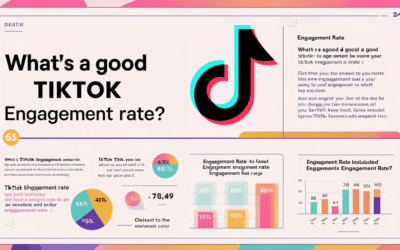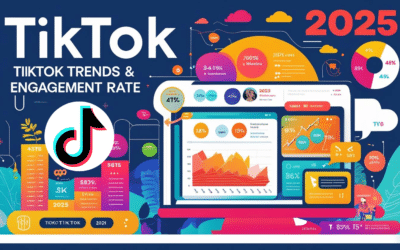9 Factors to Consider:
Micro vs. Macro Influencers,
which is best?
Trying to figure out the whole “micro vs macro influencers” thing? You’re in the right spot! The online world is buzzing around influencers.
Did you know marketers will spend $34 billion on influencer marketing in 2023? That’s a 17% jump! So, picking the right influencer isn’t just smart—it’s a must!
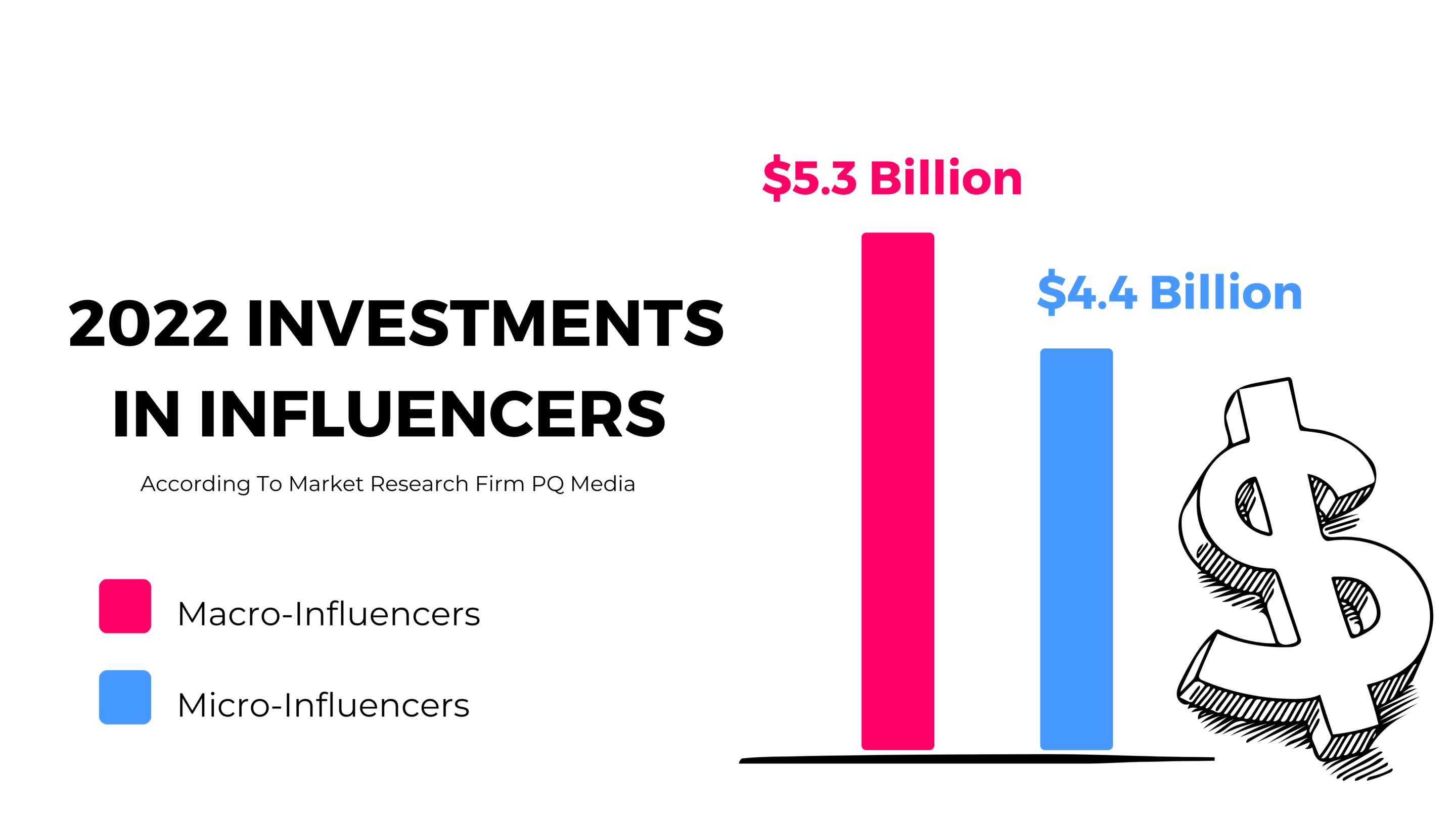
But, it’s not always a walk in the park. Ever heard about the drama between Acne Studio and Kylie Jenner?
-> After selecting Kylie Jenner as their new brand ambassador, the brand received backlash from its audience due to a clear mismatch in brand values resulting in a storm of negative comments. It led to a lot of negative chatter and a HUGE +60 billion views on TikTok with #KylieJennerAcneStudioBacklash.
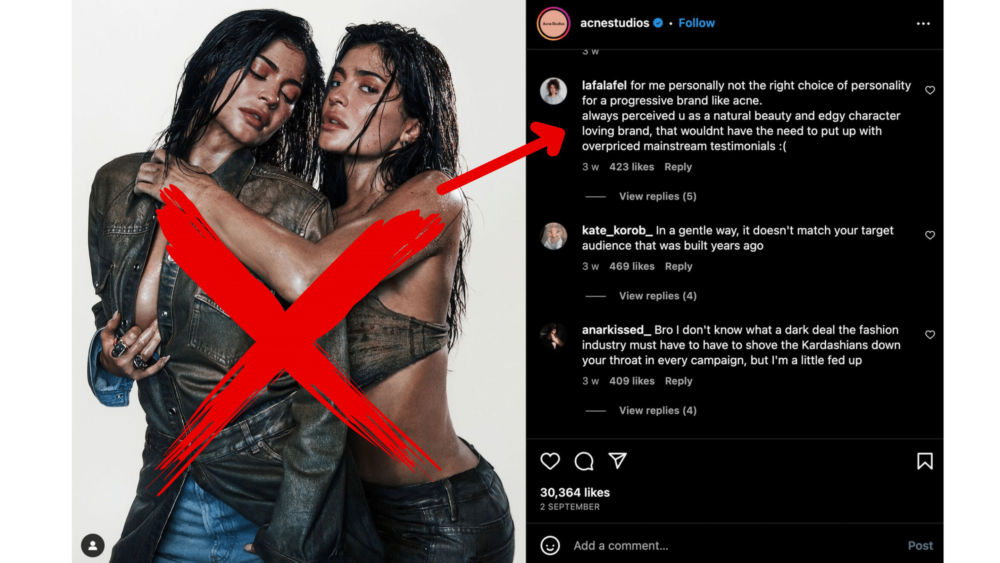
Feeling lost in a sea of nano, micro, macro, and mega influencers? Wondering how to pick the right one? Don’t worry! In this article, I’m breaking down:
-> What makes micro and macro influencers different?
-> 9 key factors when choosing between micro vs macro influencers
-> The ultimate checklist “game” to help you pick between macro & micro creators
-> Tips on finding the best micro and macro influencers
Ready to dive into the world of influencer marketing with me? Let’s go!
Key Differences : Micro vs Macro Influencers
Ok, let’s start with the basics. Stepping into influencer marketing, you’ll meet two main types of influencers:
1️⃣ Micro-Influencers:
Definition: It is a type of creator who has a small, engaged following (1,000 to 100,000) on social media, known for their authenticity and high engagement rates in niche markets influencers.
They are mostly used for:
👉 Reviews: Create concise product reviews for niche audiences.
👉 Giveaways: Conduct small-scale contests to boost community engagement.
👉 Affiliate Marketing: Earn commissions through affiliate campaigns.
👉 Content Creation: Produce and share repurposable brand-related content. Local bloggers / Niche Hobbyists / Customers / Friends and Family /Industry Experts etc.
👉 Event Attendance: Generate local buzz by attending brand events.
A micro-influencer can be: Local bloggers / Niche Hobbyists / Customers / Friends and Family /Industry Experts / Nano creator etc.
Example of a micro-influencer:
2️⃣ Macro-Influencers:
Definition: Those mega or macro creators are often celebrities or well-known personalities with a large, diverse following (over 100,000), ideal for broad brand awareness campaigns, but may have lower engagement rates.
They are mostly used for:
👉 Ambassadorship: Serve as long-term brand ambassadors.
👉 Mass Media: Feature in large-scale ad campaigns.
👉 Launch Events: Host/attend high-profile product launches.
👉 Collaborations: Co-create branded products or limited editions.
👉 Global Campaigns: Reach diverse, international audiences through global campaigns.
A macro influencer can be: Celebrities / Social Media Stars / TV Personalities / Authors & Writers / Fashion Icons / Chefs and Food Critics / Business Leaders / Political Figures / Health and Wellness Gurus etc.
Example of a macro influencer:
Bonus – here’s a quick infographic to resume the key differences between micro vs. macro influencers :
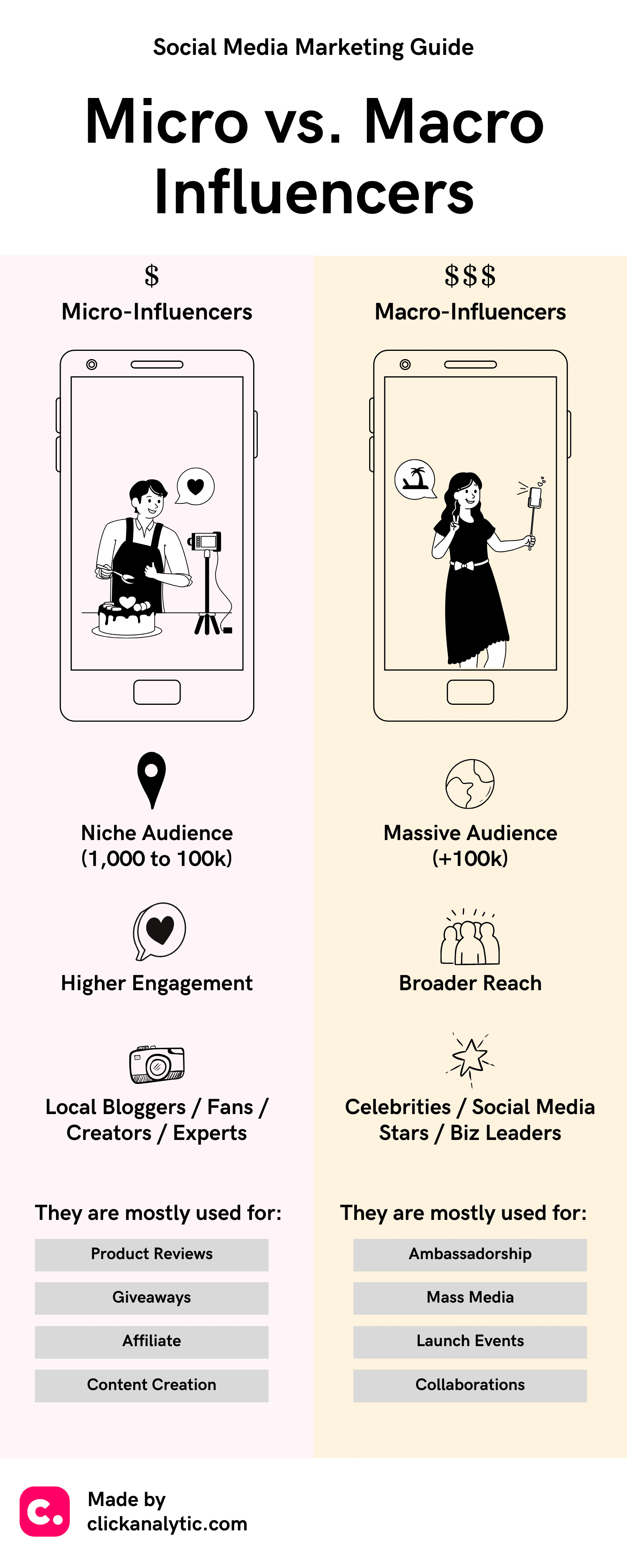
Alright, so now you know what are micro and macro influencers and the key differences.
So easy right? Let’s just use macro-influencers, they have a larger reach and can better boost my business. Waaaaiiiit!
❌ It’s not that easy!
There are a few critical factors to consider before choosing the right type of creator to collaborate with – let’s dive into it.
9 Key Factors: Micro vs Macro Influencers – Which to Choose?
Finding the right influencer type for your campaign can be a struggle, but don’t worry – I will share with you the 9 factors to help you decide on micro vs. macro influencers (or both):
1. Audience Size
2. Engagement Rate
3. Cost and Budget
4. Audience Geographic Location
5. Influencer Reputation
6. Authenticity and Credibility
7. Niche Specialization
8. Content Creation
9. Campaign Goals
Ready? Let’s go.
1. Audience Size
Audience size is a critical factor when choosing between micro and macro influencers, impacting both the reach and engagement of your campaign.
Micro-Influencers:
✅ Pro: These creators boast a niche and engaged audience, leading to higher conversion rates due to genuine interest in endorsed products.
❌ Con: However, their limited reach confines brand exposure to a smaller, segmented audience.
Macro-Influencers:
✅ Pro: Macro-influencers offer extensive reach and visibility, introducing your brand to a diverse and vast audience.
❌ Con: Despite the large follower base, they may experience less engagement per post, affecting the campaign’s effectiveness.
Quick Recap 💡
Balancing the advantages and disadvantages of each influencer type is essential. For instance, a brand like Glossier might prefer a micro-influencer for their niche beauty audience, ensuring authentic engagement.
In contrast, a global brand like Nike might opt for a macro-influencer like Cristiano Ronaldo to maximize reach and visibility.
Aligning these considerations with your marketing goals will guide you in selecting the ideal influencer for your campaign.
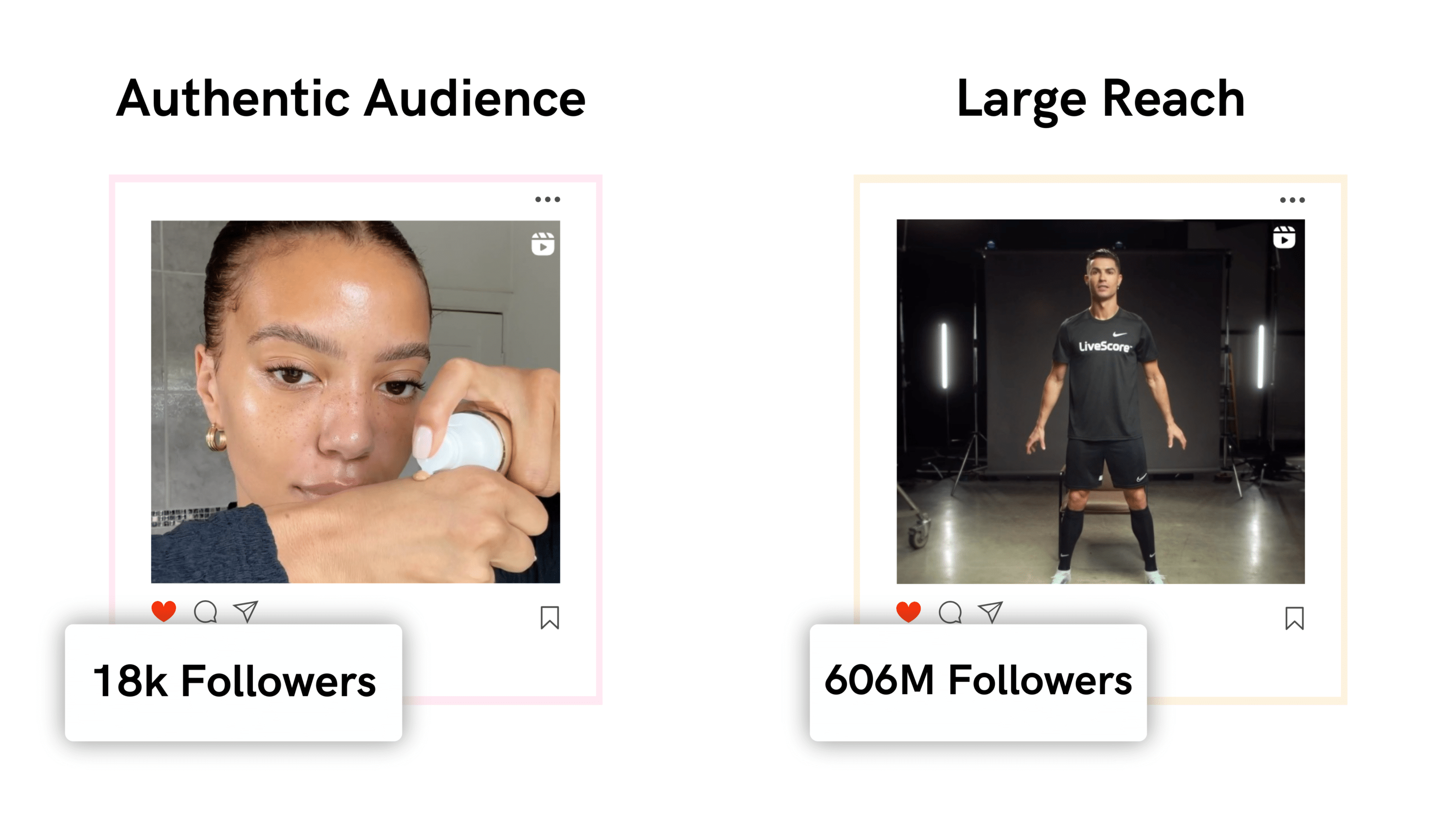
2. Engagement Rate
The number of followers is essential, but the critical stats when vetting and influencer is the engagement rate. You can have 1M followers; if no one is engaging with your content, it’s useless.
Micro-Influencers:
✅ Pro: Known for higher engagement rates, micro-influencers foster a sense of trust and expertise, usually leading to more interactions.
❌ Con: However, this engagement is often on a smaller scale due to their limited audience size. But not always (see below).
Macro-Influencers:
✅ Pro: Macro-influencers provide engagement with a larger, diverse audience, expanding brand reach.
❌ Con: They often experience lower engagement rates and less personalized interactions. Even worse, the net reach might sometimes be lower than a micro-influencer.
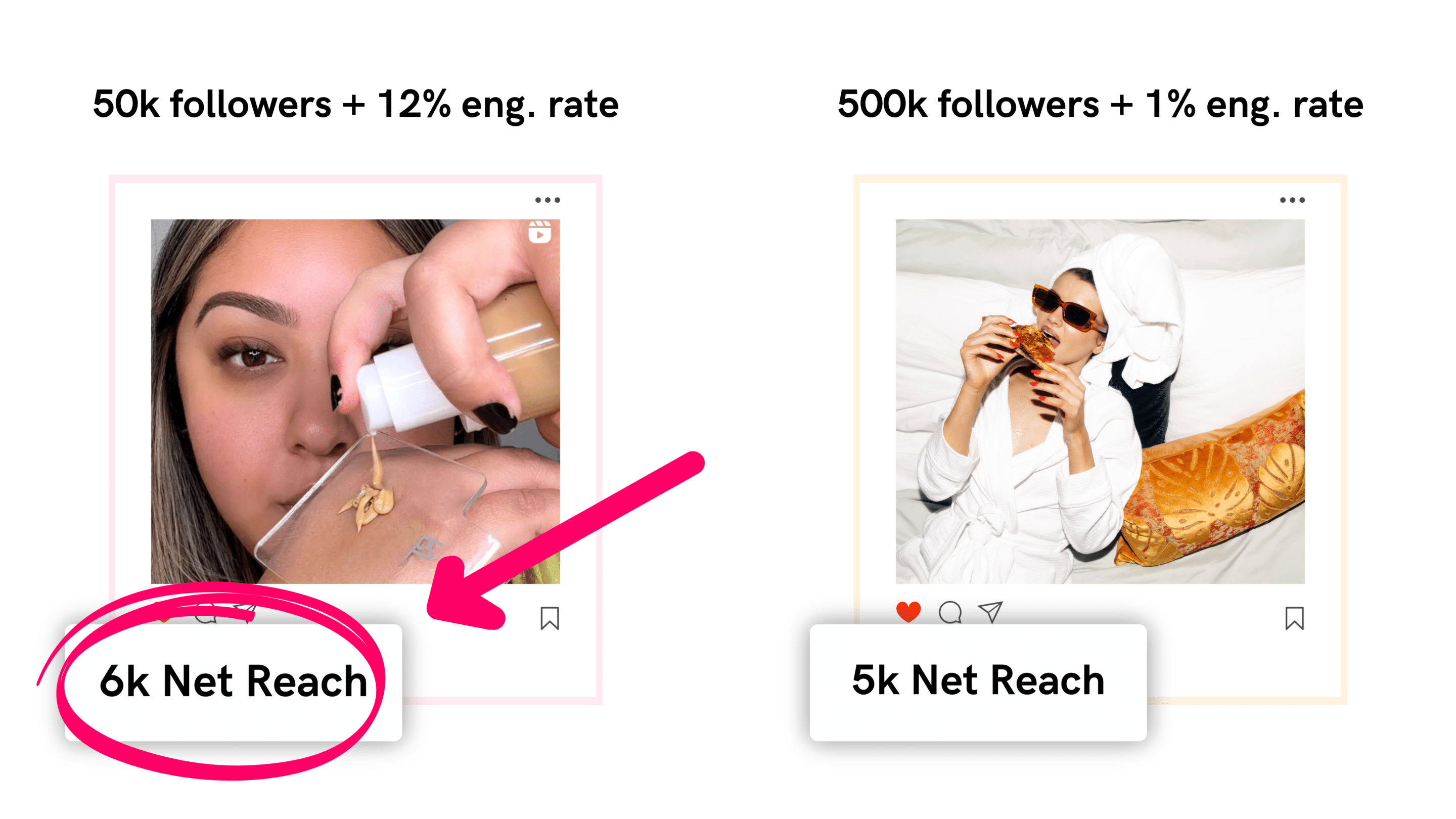
Quick Recap 💡
It’s all about strategic alignment. For instance, choosing a micro-influencer with 50k followers and a 12% engagement rate can yield a larger net reach than opting for a macro-influencer with 500k followers and a 1% engagement rate.
However, the choice isn’t always clear-cut. Depending on your campaign objectives, a global ambassador representing a broad audience might be more beneficial than targeting a niche community.
Balancing reach and engagement while aligning with your marketing strategy is the key to making the most informed decision.
3. Cost and Budget
When diving into the world of influencer marketing, notions such as CPM (Cost Per Mille) and CPC (Cost Per Click) are critical in making informed decisions. We previously discussed the theoretical aspects of micro vs. macro influencers, but the true pivotal factor that will determine your decision is your budget and strategy.
As explained above, finding a micro-influencer with a 12% engagement rate can potentially bring more net reach than a lower-engaged macro profile. However, finding a tightly engaged micro profile can be challenging. But here’s how knowing your budget can help.
-> For the budget of one 500k follower macro influencer, you could strategically select 5-10 high-engaged micro-influencers, achieving a lower CPM and higher overall reach.
But again, it all depends on your campaign strategy.
Micro-Influencers:
✅ Pro: They are typically more cost-effective, offering affordability for brands with limited budgets.
❌ Con: The challenge lies in managing multiple influencers to achieve a broader reach, which can be logistically demanding. Time is another cost to consider.
Macro-Influencers:
✅ Pro: Collaborating with a single macro-influencer simplifies campaign management and offers extensive reach and visibility.
❌ Con: However, the higher cost of partnering with well-known influencers may be a constraint for smaller brands.
Quick Recap 💡
Strategically balancing cost-effectiveness and reach is essential.
Here’s a clear example:
If you select 10 micro-influencers with 10-50k followers each might total around $5k in cost, but could yield a net reach of 25k new consumers touched (assuming all have an engagement rate between 3-5%).
In contrast, partnering with one influencer boasting 300-500k followers might cost the same but only achieve a net reach of 10-15k.
Brands might opt for the affordability and higher reach of micro-influencers, acknowledging the management of multiple collaborations, or invest in a macro-influencer for widespread visibility, despite the potentially lower net reach. Aligning these financial considerations with your campaign objectives is crucial for maximizing return on investment.
🎁 Here’s a bonus surprise for you. You can find below our pricing grid for influencers depending on their size and platform.
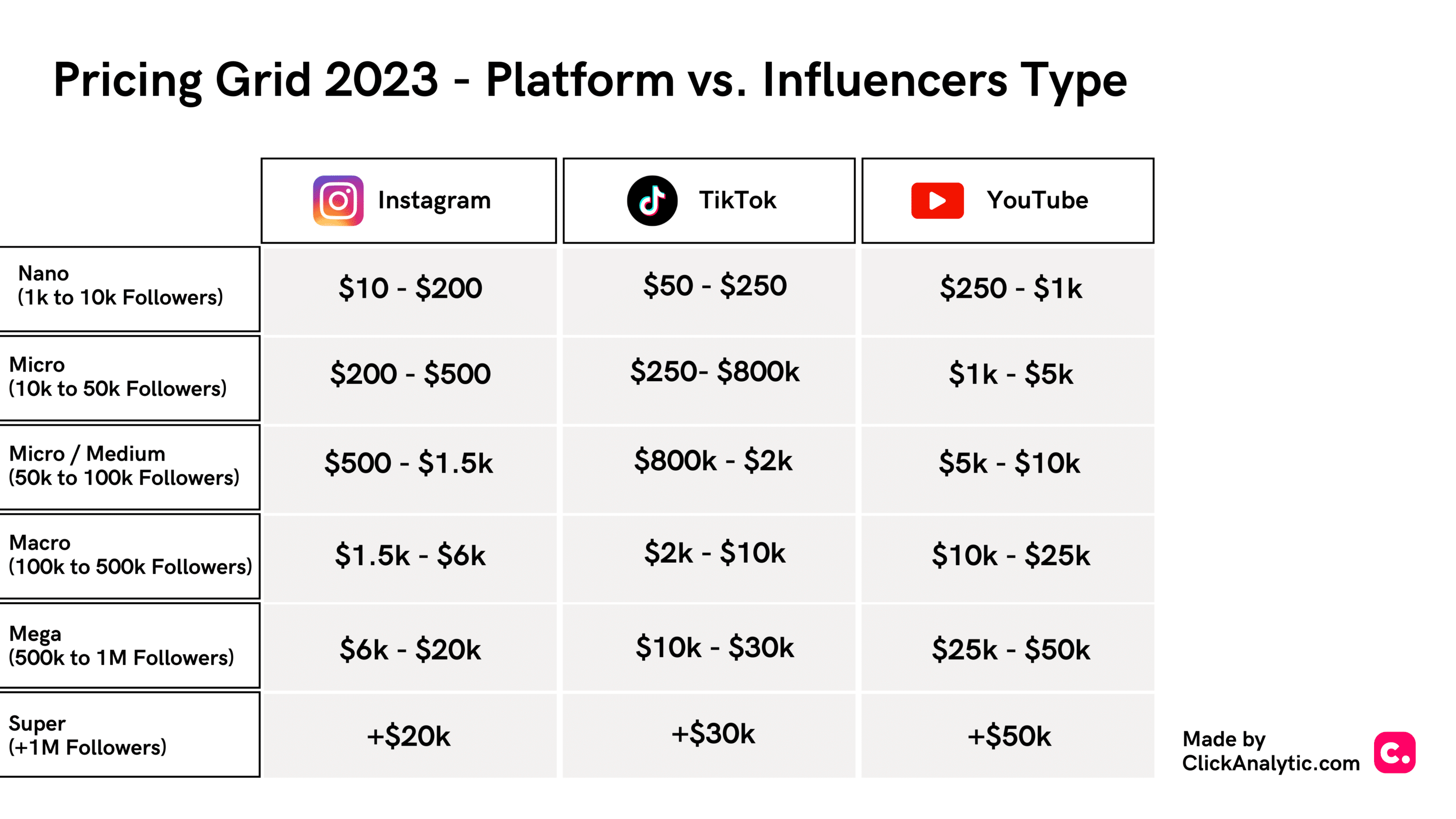
4. Audience Geographic Location
When examining the differences between micro vs. macro influencers, there is a significant distinction regarding audience geographic location. Micro-influencers typically have a strong presence in local communities, while macro-influencers have the ability to reach a global audience.
Micro-Influencers:
✅ Pro: Those creators often have a strong local influence, making them ideal for campaigns targeting specific regions or communities.
❌ Con: Their influence is typically geographically limited, which may restrict the campaign’s overall reach.
Macro-Influencers:
✅ Pro: They offer a broad geographic reach, allowing brands to target a diverse and global audience.
❌ Con: Lack of local influence and community connection.
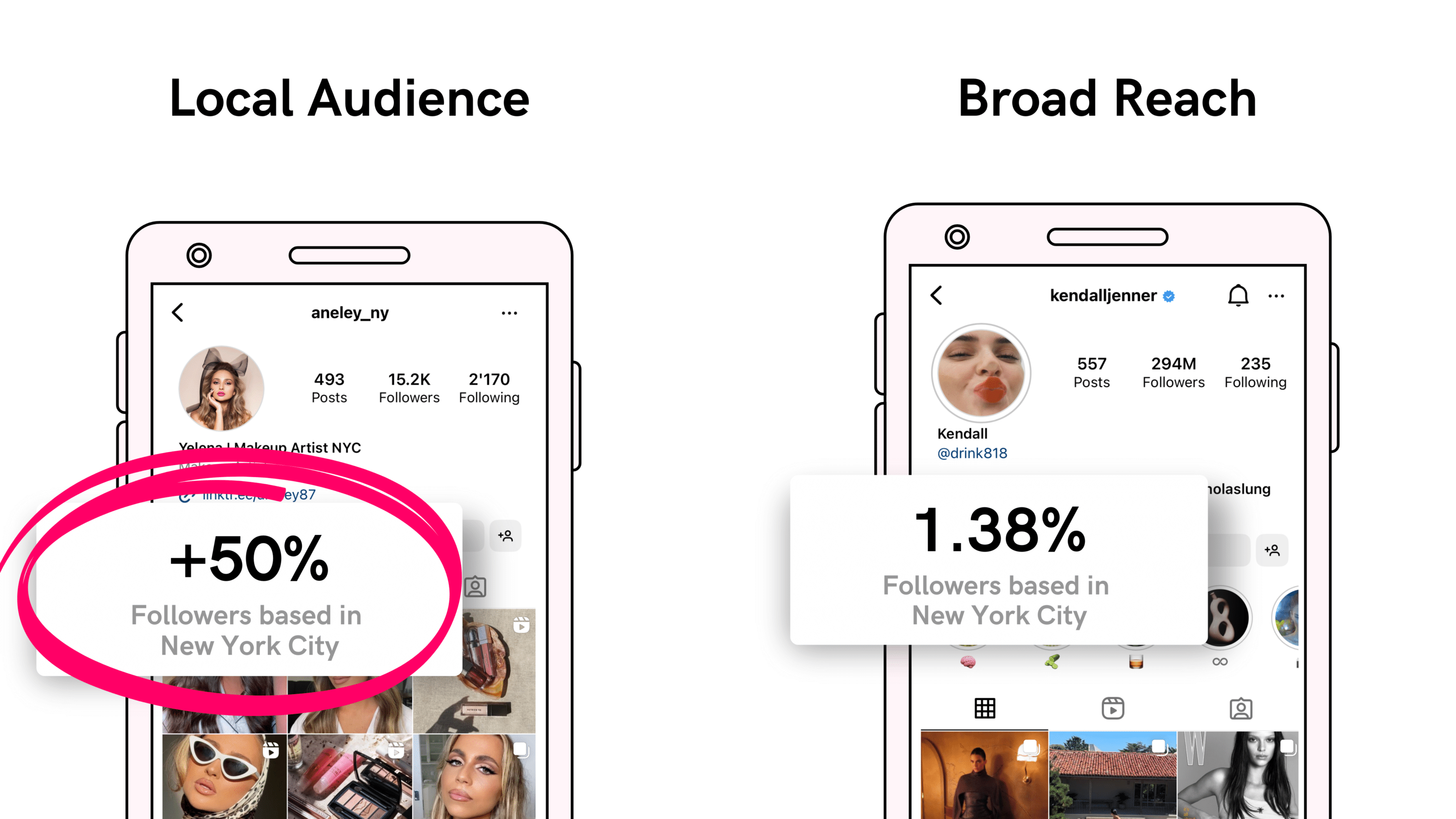
Quick Recap 💡
Strategically aligning geographic considerations with campaign goals is essential. A brand targeting a local audience might benefit from the community connection of a micro-influencer, while a brand aiming for global visibility might prefer the extensive geographic reach of a macro-influencer.
-> Balancing local influence with a wide reach is key to selecting the right influencer for your campaign.
5. Influencer Reputation
So, we discussed that audience demographics are a critical factor when looking at micro vs. macro influencers, but influencer reputation is as important. Both micro and macro influencers present distinct advantages and challenges in terms of credibility and public perception.
Micro-Influencers:
✅ Pro: Micro creators generally have a lower likelihood of negative publicity, as they are often seen as more authentic and relatable.
❌ Con: They may have a less established reputation, which could impact the credibility and reach of the campaign.
Macro-Influencers:
✅ Pro: Possess an established reputation and a proven track record, which can enhance the credibility of the brand they endorse.
❌ Con: They are under higher scrutiny and face a greater risk of negative publicity due to their high-profile status.
Quick Recap 💡
Selecting between micro and macro-influencers = balancing between authenticity with reputation. The Pepsi-Kendall Jenner backlash exemplifies potential brand damage from ill-received collaborations. Aligning reputation with brand objectives is key to a successful partnership.

6. Authenticity and Credibility
Transitioning from Influencer Reputation, we delve into Authenticity and Credibility—key factors in building trust in influencer marketing. Both micro and macro influencers present unique advantages and challenges in this area.
Micro-Influencers:
✅ Pro: Often perceived as more authentic, creating genuine audience connections.
❌ Con: Being less known, their credibility may be questioned.
Macro-Influencers:
✅ Pro: Possess well-established credibility due to industry prominence.
❌ Con: May be seen as less authentic, affecting audience connection. Often do more partnerships than micro creators.
Quick Recap 💡
Balancing authenticity and credibility is key.
-> Micro-influencers, with closer audience relations, offer authenticity but may face credibility questions.
-> Macro-influencers, despite their credibility, can seem less authentic due to frequent partnerships and more fake followers.
Aligning these factors with campaign goals is essential for success. Between micro vs macro-influencers = balancing between authenticity and reputation.
7. Niche Specialization
When evaluating micro vs macro influencers, niche specialization is another pivotal factor, especially for targeted campaigns.
Micro-Influencers:
✅ Pro: Excel in niche specialization for a targeted approach.
❌ Con: To cover a variety of niches, brands might need to collaborate with multiple micro-influencers.
Macro-Influencers:
✅ Pro: Versatile for broader campaigns with diverse followers interests.
❌ Con: May lack depth in niche specialization.
Quick Recap 💡
Your campaign objective and product type will be key here.
In the micro vs macro influencers debate, niche specialization is critical. Micro-influencers offer depth in niches, while macro-influencers provide versatility but might lack niche depth.
8. Content Creation
Delving into the micro vs macro influencers debate, content creation emerges as a game-changer! Each type boasts a unique style, but one clearly takes the lead in this category… Can you guess who? Let’s find out!
Micro-Influencers:
✅ Pro: Affordable + Excel with personalized, relatable content that resonates well.
❌ Con: No con!
Macro-Influencers:
✅ Pro: Known for high-quality, professional content with wide appeal.
❌ Con: Expensive + miss the personal touch.
Quick Recap 💡
Your campaign objective and product type will be key here.
In the micro vs macro influencers debate, niche specialization is critical. Micro-influencers offer depth in niches, while macro-influencers provide versatility but might lack niche depth.
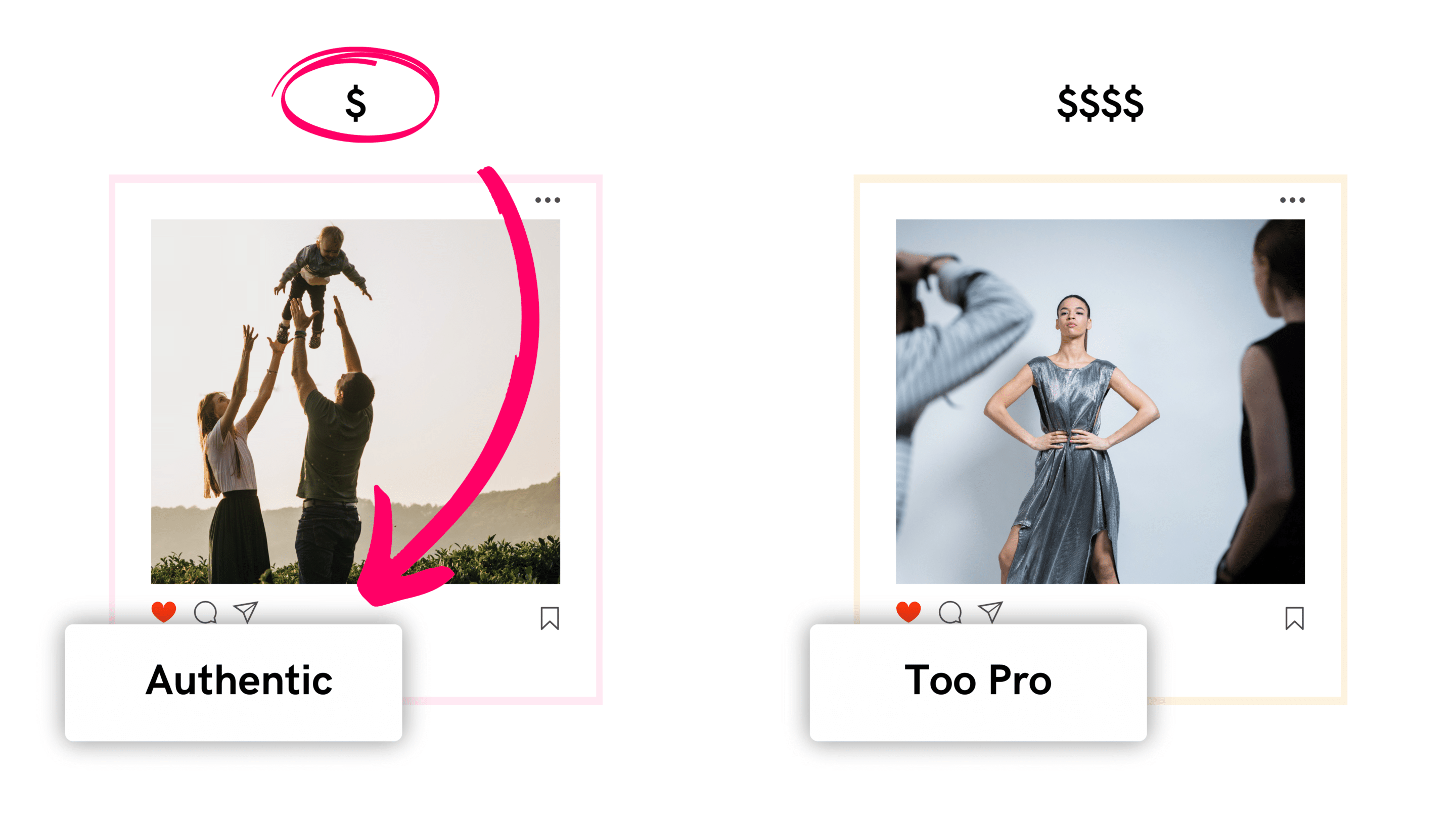
9. Campaign Goals
Here we are! The last but not least factor to consider when choosing between micro vs macro influencers. We now have covered the benefits of both types from content creation audience reach to engagement metrics and cost.
It’s now time to focus on the last critical factor to help you decide between macro and micro-influencers for your business.
Each influencer type excels in different areas, but which one aligns best with your objectives? Let’s uncover!
Micro-Influencers:
✅ Pro: They shine when it comes to community-building, fostering strong connections and engagement.
❌ Con: Impact can be limited when the goal is broad brand awareness.
Macro-Influencers:
✅ Pro: They are your go-to for extensive brand awareness, reaching a vast audience with ease.
❌ Con: When it comes to community engagement and building close relationships, they might not be as effective.
Quick Recap 💡
Aligning your campaign goals with the right influencer type is crucial.
-> Micro-influencers are excellent for community-building, while macro-influencers excel in creating widespread awareness.
Balancing your goals and choosing accordingly will set the stage for a successful campaign.
But, I have one last surprise for you. We created the ultimate checklist to decide if macro or micro influencers (or perhaps both) are the best fit for your brand!
Check it below…
Ultimate Checklist Game: Micro vs Macro Influencers
Alright, it’s game time! I’ve walked you through the ins and outs of micro vs macro influencers, and now, I’ve got a special checklist for you.
It’s designed to help you figure out which influencer type is your perfect match. Are you ready to find out if it’s micro, macro, or a bit of both that suits your brand best?
Let’s get started!
How to play?
👉 For every ‘A’ answer, lean towards micro-influencers.
👉 For every ‘B’ answer, lean towards macro-influencers.
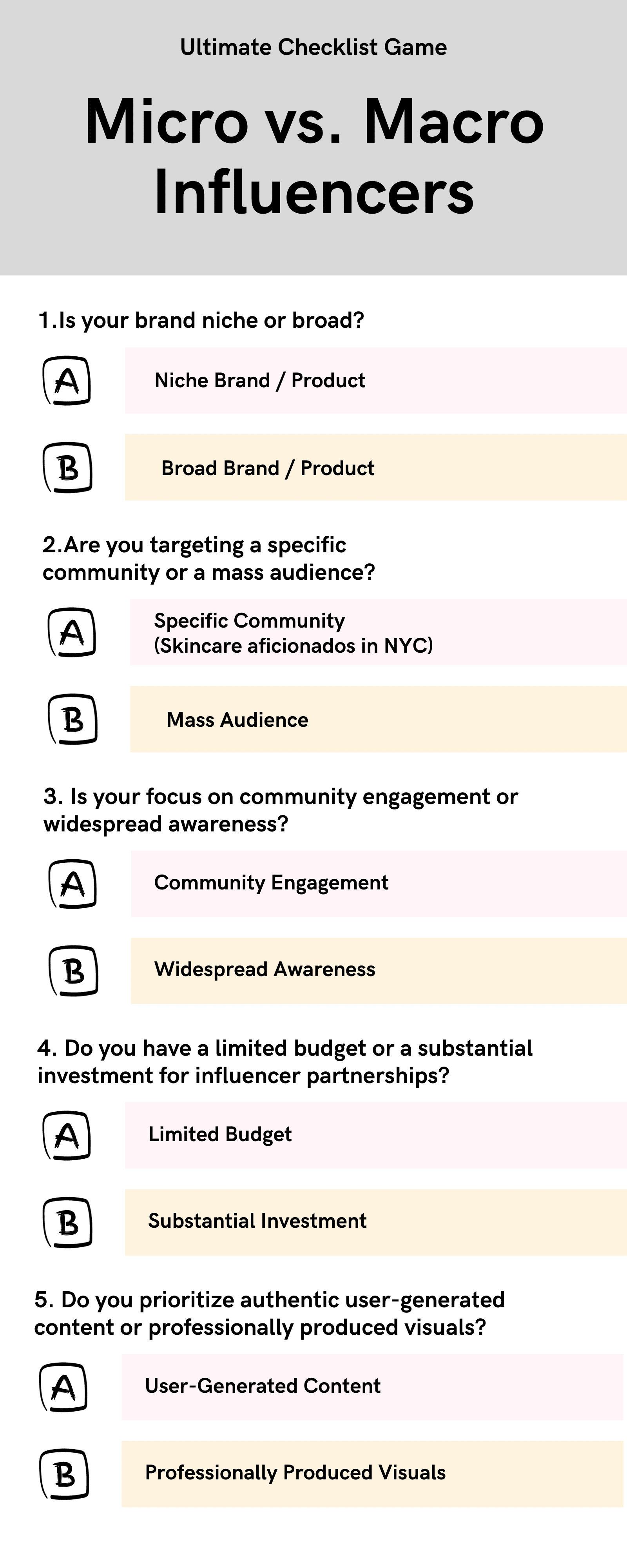
Results
👉 Mostly A’s: Micro-influencers align well with your specialized and community-focused goals.
👉 Mostly B’s: Macro-influencers offer extensive reach and polished content for your brand.
👉 Balanced A’s and B’s: Consider a blend of both for a versatile campaign approach.
Great job on completing the checklist!
Whether you found a match in micro, macro, or a blend of both, you’re now ready to make a choice that’s tailored just for your brand. And guess what? I’ve got more tips coming your way!
It’s time to find influencers for your brand.
How to find macro or micro influencers?
Navigating through 200 million creators to decide between micro vs macro influencers can be daunting, but here’s a quick tip!
-> Using search tools like Click Analytic can be your shortcut. It lets you apply advanced filters to find influencers who align with your brand, whether they’re micro or macro.
This influencer search tool, allows you to employ advanced filters such as audience demographics, size, and content interest, ensuring you find the perfect micro or macro influencers who truly align with your brand’s ethos.
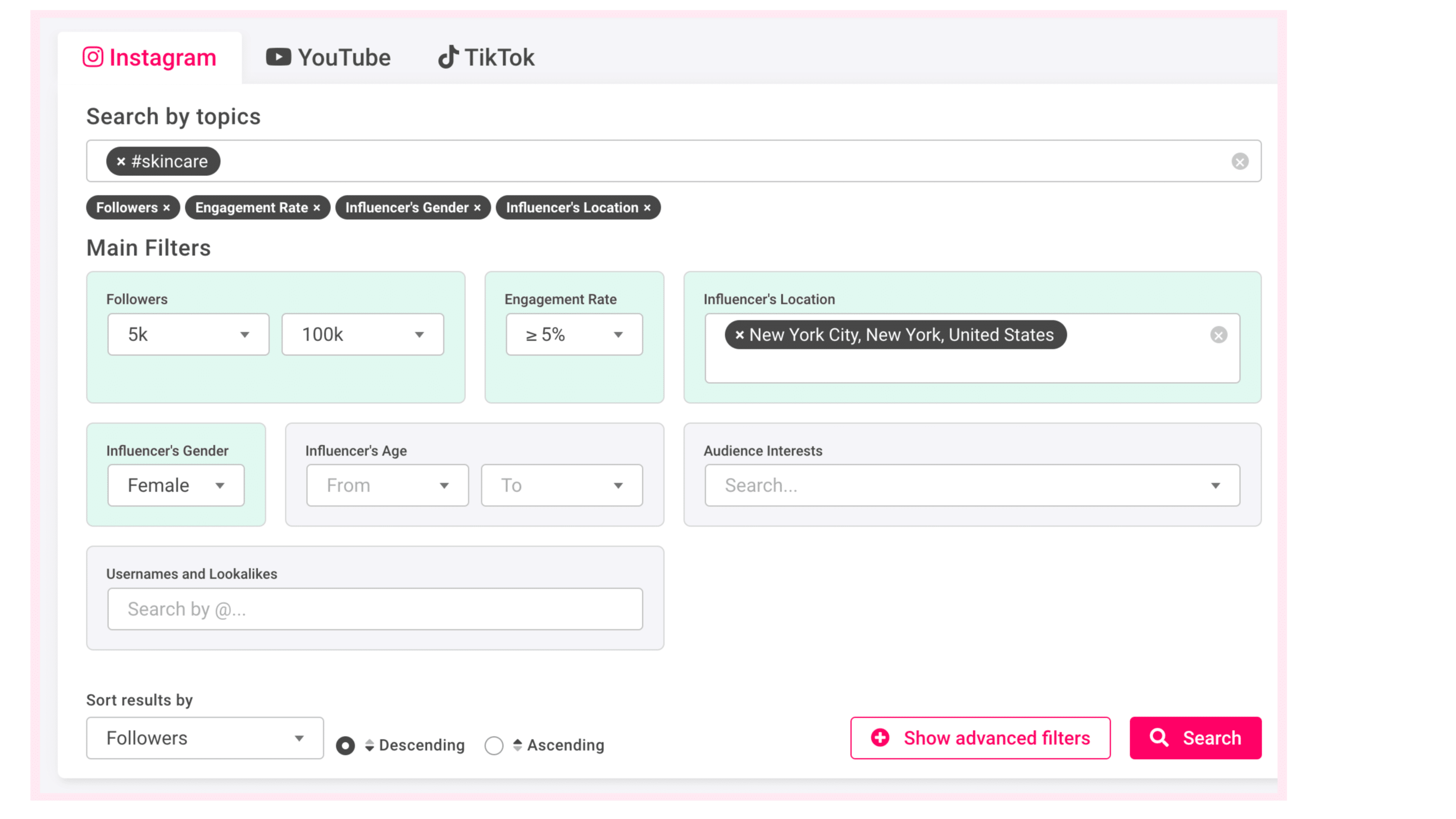
Ready to uncover the ideal influencer for your brand? Dive in with a 14-day trial at Click Analytic and embark on a journey filled with promising partnerships
Influencer Marketing Articles
Actionable tips to get more success with influencer marketing campaigns
What Is a Good TikTok Engagement Rate?
Discover what a good TikTok engagement rate looks like in 2025 and how to calculate and improve it using practical strategies and free tools like Click Analytic’s TikTok Engagement Rate Calculator.
TikTok Trends & Engagement Rate in 2025
Looking to boost your TikTok engagement rate in 2025? Discover current TikTok trends, average benchmarks, and proven strategies to grow your reach. Includes a free TikTok engagement rate calculator!
UGC TikTok Engagement Rate: How to Measure and Boost Performance
Want to increase your UGC TikTok engagement rate? Learn how to track performance, use authentic user content, and apply data-backed tips to grow your reach and engagement on TikTok.




